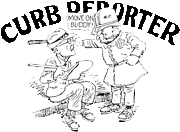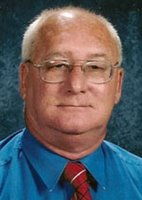Family fun before mouse world

Last week I went with my wife, daughter, nephew, and sister-in-law to Disney World in Orlando, Florida. We were fortunate to get a condo at a resort inside the park and avoided all the stress of driving, parking, ticket buying, etc. We had a wonderful time filled with "mechanical" magic for the whole family. On the trip home, I began to think about my family outings of long ago and how much simpler (and less expensive) they were.
During my early childhood, our most popular form of family recreation was to go on a picnic. On many hot summer Sundays our entire family would pile into several cars and head up the mountain via highway 176 to Melrose, an area midway between Tryon and Saluda. We called the place, "Picnic Park", located above the river on a plateau between the mountains. The park was on the left just before the road that goes to Pearson's falls. Across from the park was (and I think still is) a long building that housed a gift shop and store.
The picnic area consisted of a trail going through the woods down to the river. I remember the rock-filled river and the swimming hole at the end of the trail. Along the trail were massive boulders where we could spread out our picnic blanket if no wooden tables were available.
The day's fare usually consisted of fried chicken, potato salad, pork and beans (cold, not baked), and my mother's great devilled eggs. For some unknown reason, food tastes better on a picnic. We usually cut a watermelon for desert, but occasionally the men would take turns cranking out a tub of homemade ice cream from a wooden churn. Our only worry at Picnic Park was watching out for the tiny red bugs we called "chiggers". Even they could not spoil a wonderful day of swimming, wading in the cold river, and stuffing ourselves with food.
For younger adults in the family, Rainbow Lake was another weekend getaway to enjoy with their young children. I am not certain where the lake was located, but I think it was near Spartanburg (maybe someone out their in cyberspace can tell us its location). Rainbow Lake was situated below a tiered, sloping hill that had concrete steps that led down to the water. The tiers were bordered by short concrete walls that gave the place an amphitheater look. Sunbathers spread out on the tiers on blankets and lawn chairs. At the top of the hill was a refreshment center where one could buy drinks, burgers, hot dogs and popsicles. Large speakers at the center blared out old rock and roll hits such as Fats Domino's "Blueberry Hill". The lake itself was small, but it had a huge floating dock that one could swim out to. My mother, brother and I spend many wonderful days at Rainbow Lake.
If we didn't want to drive up the mountain or down to the lake, Harmon field was close to home, and was a great place to have a picnic especially if the threat of rain was eminent. There was (and I think still is) a long wooden shelter with a tin roof that housed a number of picnic tables lined up in several rows. On many Sundays our small church would have what we called "dinner on the grounds" under the shed at Harmon field. Each member of the congregation would bring a delicious covered dish to share. The women would lay the spread out on the tables while the men would fill large metal wash tubs with ice and bottled drinks. Before and after the meal, children and adults would spend leisure time together, wading in the Pacolet River, playing softball, riding on the steel merry-go-round, or swinging.
Today, our families have a myriad of recreational options; so many that, ironically, it sometimes becomes stressful just in deciding what to do with our leisure time. Long ago, our options were fewer, but simpler and, I think, more restful.
Please sent me your comments and reflections, and have a restful summer. shefner@savcps.com.


